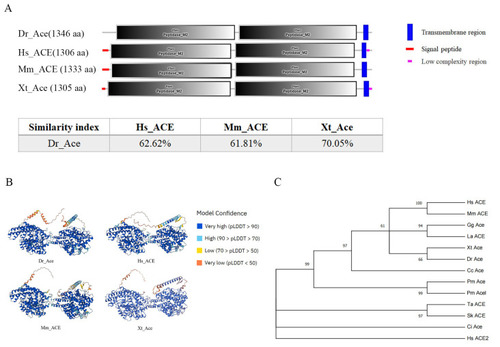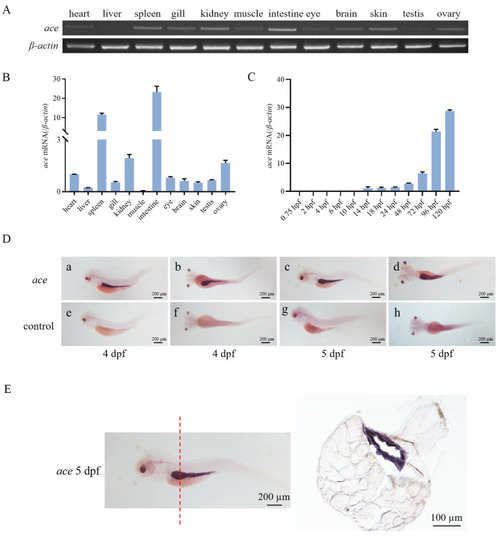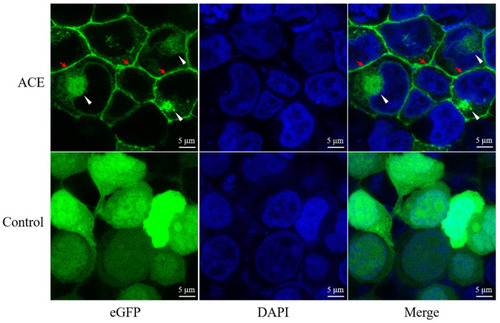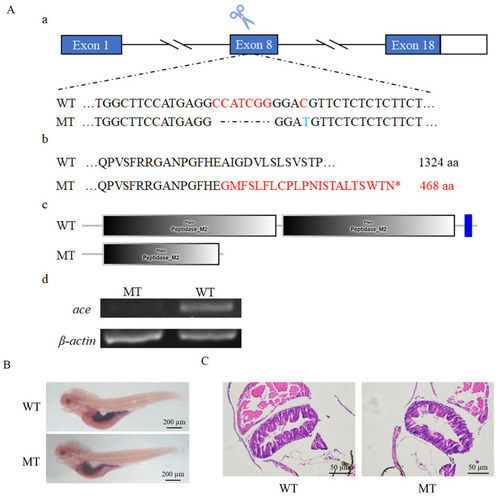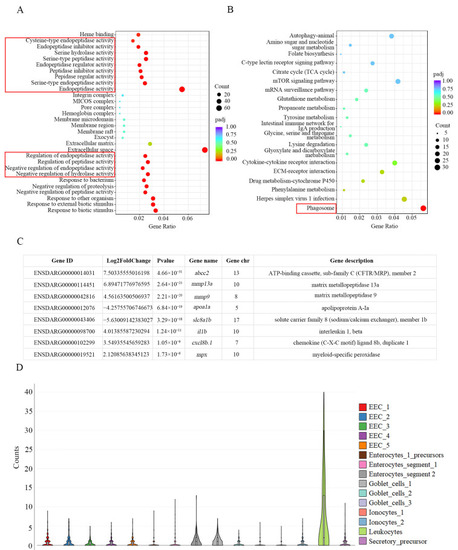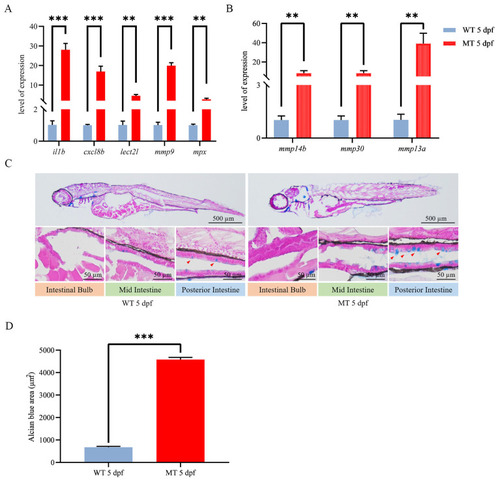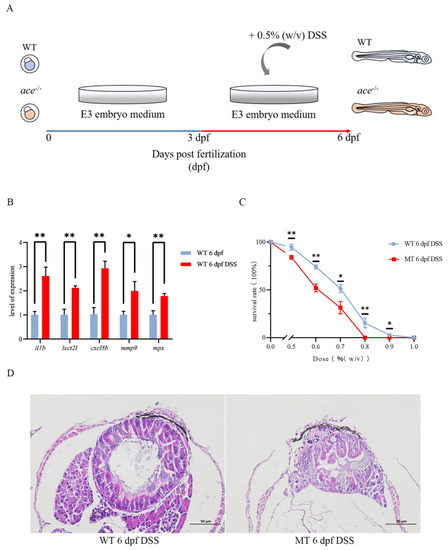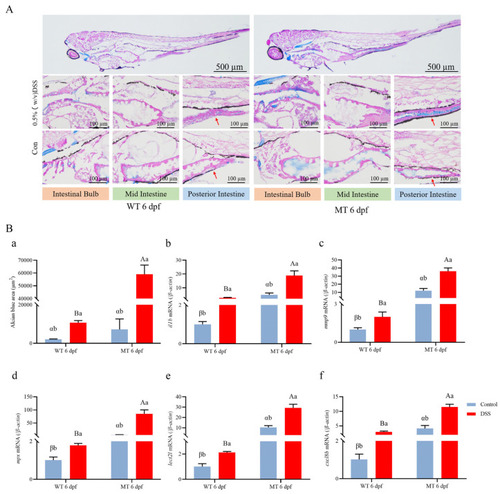- Title
-
Ace Deficiency Induces Intestinal Inflammation in Zebrafish
- Authors
- Wei, M., Yu, Q., Li, E., Zhao, Y., Sun, C., Li, H., Liu, Z., Ji, G.
- Source
- Full text @ Int. J. Mol. Sci.
|
Homology comparison of Ace homologues in different species. ( |
|
Homology comparison of Ace homologues in different species. ( |
|
Expression patterns of |
|
Subcellular localization of Ace in HEK293T cells. Recombinant plasmids |
|
Knockout of ace and morphological examination of ace−/− mutant larvae. ( |
|
RNA-seq analysis of |
|
Inflammatory response evaluation for |
|
The IBD model was successfully constructed using DSS. ( |
|
Histopathological assessment comparing |

